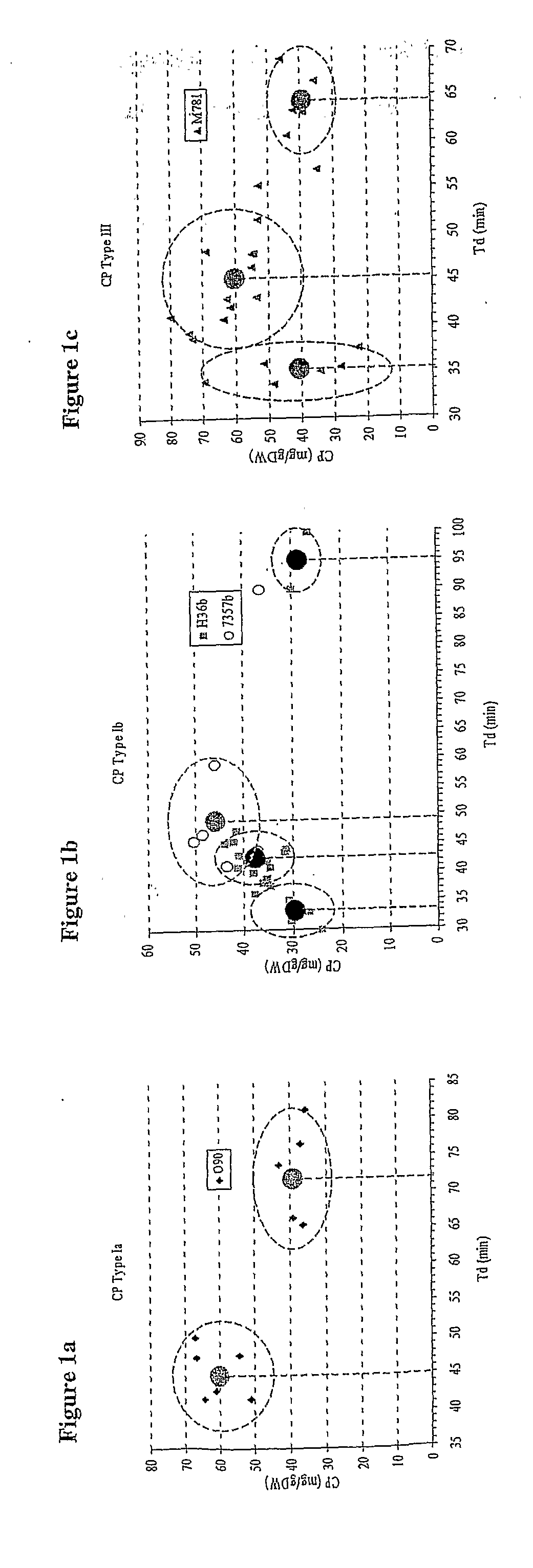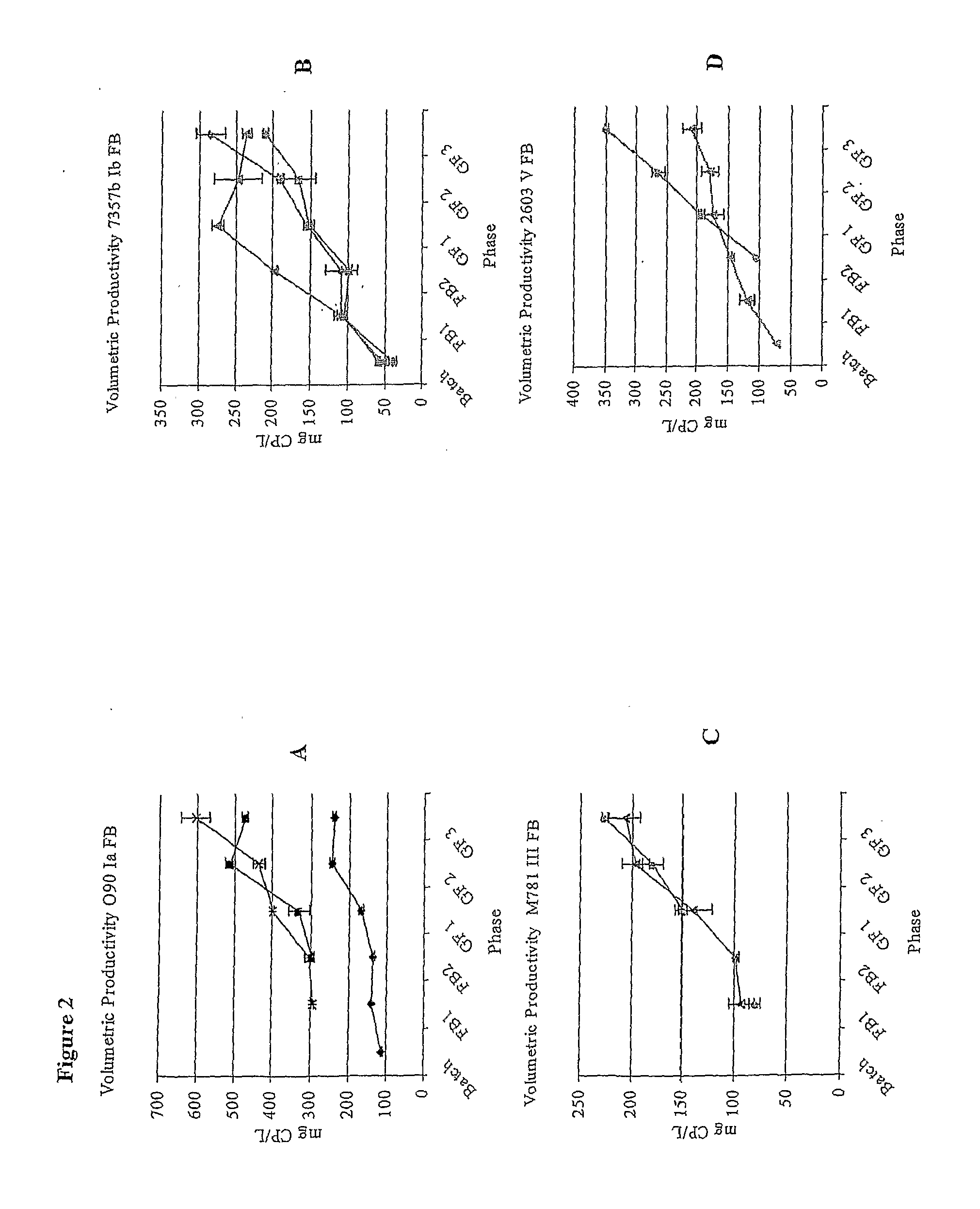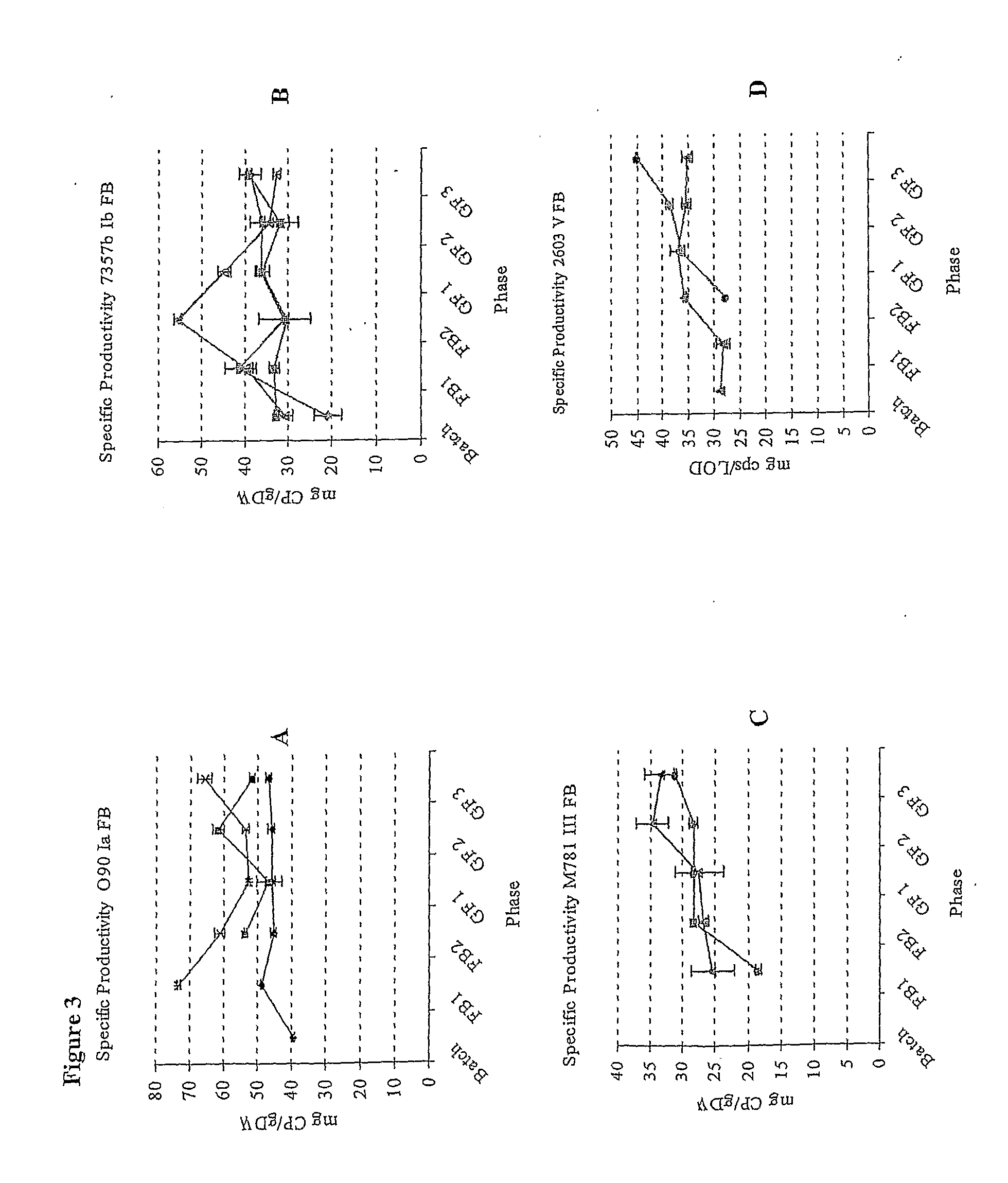Fed Batch Culture Methods for Streptococci
a batch culture and streptococci technology, applied in the field of bacteria cultures, can solve the problems of high cps levels and known as “bad producers” of cps, and achieve the effect of high cps yield
- Summary
- Abstract
- Description
- Claims
- Application Information
AI Technical Summary
Benefits of technology
Problems solved by technology
Method used
Image
Examples
Embodiment Construction
Establishment of Optimal Growth-Rate for High Specific Yield
[0174]To determine the best growth rate for specific capsular polysaccharide production, many continuous cultures were run at different dilutions. Capsular polysaccharide content was determined using the chemical dosing method to quantify sialic acid [165]. As the method was applied to a complex sample, interferences were determined using a non-encapsulated mutant strain (COH1-13) [166]. The method was validated by spiking with sialic acid and purified capsular polysaccharide. The results were also cross-validated by chromatography.
[0175]Type 1a strain O90 was shown to produce 1.5 times more capsular polysaccharide at a fast growth rate than a slow one (see FIG. 1A). Type 1b strain H36b was tested at an even faster growth rate than that used for strain O90 (a td of d of 45 mins. As for all strains tested, increasing the td to 95 mins caused a further reduction in capsular polysaccharide yield. Strain 7357b showed the same p...
PUM
| Property | Measurement | Unit |
|---|---|---|
| temperature | aaaaa | aaaaa |
| temperature | aaaaa | aaaaa |
| temperature | aaaaa | aaaaa |
Abstract
Description
Claims
Application Information
 Login to View More
Login to View More - R&D
- Intellectual Property
- Life Sciences
- Materials
- Tech Scout
- Unparalleled Data Quality
- Higher Quality Content
- 60% Fewer Hallucinations
Browse by: Latest US Patents, China's latest patents, Technical Efficacy Thesaurus, Application Domain, Technology Topic, Popular Technical Reports.
© 2025 PatSnap. All rights reserved.Legal|Privacy policy|Modern Slavery Act Transparency Statement|Sitemap|About US| Contact US: help@patsnap.com



